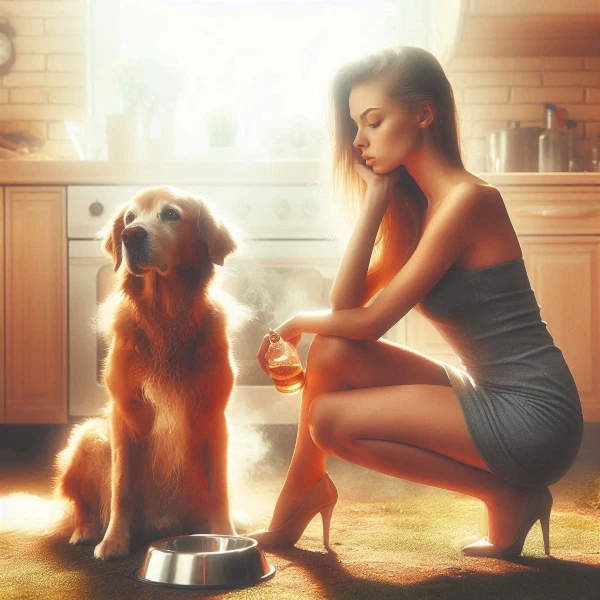Can my dog be happy in an apartment?
Factors to Consider
Not all dogs are suited to apartment living. Size, energy level, and temperament play a crucial role.
- Size: Smaller dogs like Chihuahuas or Bichons naturally adapt better to confined spaces than larger dogs like German Shepherds.
- A Chihuahua can be content with a small space and is easy to carry around.
- A Bichon Frise is compact and enjoys cuddles on the couch.
- A German Shepherd, on the other hand, needs more space to exercise.
- Energy Level: Energetic breeds (Jack Russells, Border Collies) need more stimulation than calmer breeds (Bulldogs, Pugs).
- A Jack Russell Terrier requires frequent play and dynamic walks.
- A Border Collie needs intense physical and mental activities.
- An English Bulldog is more sedentary and enjoys naps.
- Behavior: A calm and quiet dog is better suited to apartment living.
- A Pug is generally calm and less likely to bark.
- A Cavalier King Charles Spaniel is affectionate and discreet.
- A Beagle, however, can be noisy and needs good training.
Fundamental Needs in an Apartment
To ensure your dog is happy and thriving in an apartment, it's essential to meet their fundamental needs:
Regular Physical Exercise
Even in an apartment, your dog needs exercise. Here are some ideas:
- Daily trips to the park.
- A morning walk in the park to sniff and run.
- A play session with other dogs in a dedicated area.
- An evening stroll to unwind after a day indoors.
- Interactive play sessions indoors (ball throwing, mental stimulation games).
- Throw a ball in a hallway for quick races.
- Use an interactive toy that dispenses treats.
- Play hide-and-seek to stimulate the sense of smell.
- Morning and evening walks, even in bad weather.
- A short walk in the rain with a dog raincoat.
- A brisk evening walk to release accumulated energy.
- A morning outing to enjoy the calm before the city wakes up.
Mental Stimulation
Boredom can quickly become a problem. Invest in:
- Intelligent toys (food puzzles).
- A food puzzle where the dog has to move pieces to access treats.
- A snuffle mat with hiding spots for kibble.
- A toy filled with treats that the dog has to roll to release.
- Obedience games.
- Learn basic commands like "sit", "lie down", "come".
- Work on recall to strengthen the bond.
- Teach tricks like "give paw" or "roll over".
- Training new tricks.
- Learn to "play dead" for a fun moment.
- Teach to "pick up toys" to help with tidying up.
- Train to "close the door" with the mouth.
Arranging Your Apartment
A few simple adjustments can optimize your dog's comfort:
- Create a dedicated space with a comfortable bed.
- Place a soft bed in a quiet corner.
- Add a cozy blanket for extra comfort.
- Position the bed near a window to observe the outdoors.
- Prepare floor protections for "little accidents" with puppies.
- Use absorbent mats for risky areas.
- Set up barriers to limit access to certain rooms.
- Have suitable cleaning products for accidents.
- Ensure good ventilation and temperature for your dog's well-being.
- Use a fan to cool the air in summer.
- Maintain a comfortable ambient temperature with a thermostat.
- Regularly air out rooms to refresh the air.
Advantages of Apartment Living for a Dog
Contrary to popular belief, apartment living can have certain advantages:
- Less exposure to external parasites.
- Reduced risk of ticks and fleas.
- Less contact with wild animals carrying diseases.
- A more controlled environment for sensitive dogs.
- More interaction with the owner.
- More playtime and cuddles.
- Increased monitoring of health and behavior.
- Strengthened emotional bond through proximity.
- A more controlled living environment (temperature, security).
- Stable indoor temperature year-round.
- Enhanced security against intrusions or external dangers.
- Less stress from unexpected outdoor noises.
Some Precautions to Take
Living in an apartment also imposes certain constraints:
- Avoid noise disturbances (excessive barking).
- Train your dog to bark on command.
- Use toys to distract from outdoor noises.
- Install thick curtains to muffle sounds.
- Teach your dog to tolerate absences.
- Gradually accustom your dog to being alone.
- Leave interactive toys to occupy during absences.
- Use a camera to monitor and reassure remotely.
- Plan regular outings, even for house-trained dogs.
- Schedule walks at fixed times to create a routine.
- Use apps to find walking routes.
- Organize outings with other dog owners.
Other Tips for Dog Owners
© 2023 touslestoutous.com − All doggies. All rights reserved.
"The data available on this site may be used provided that the source is duly acknowledged."
